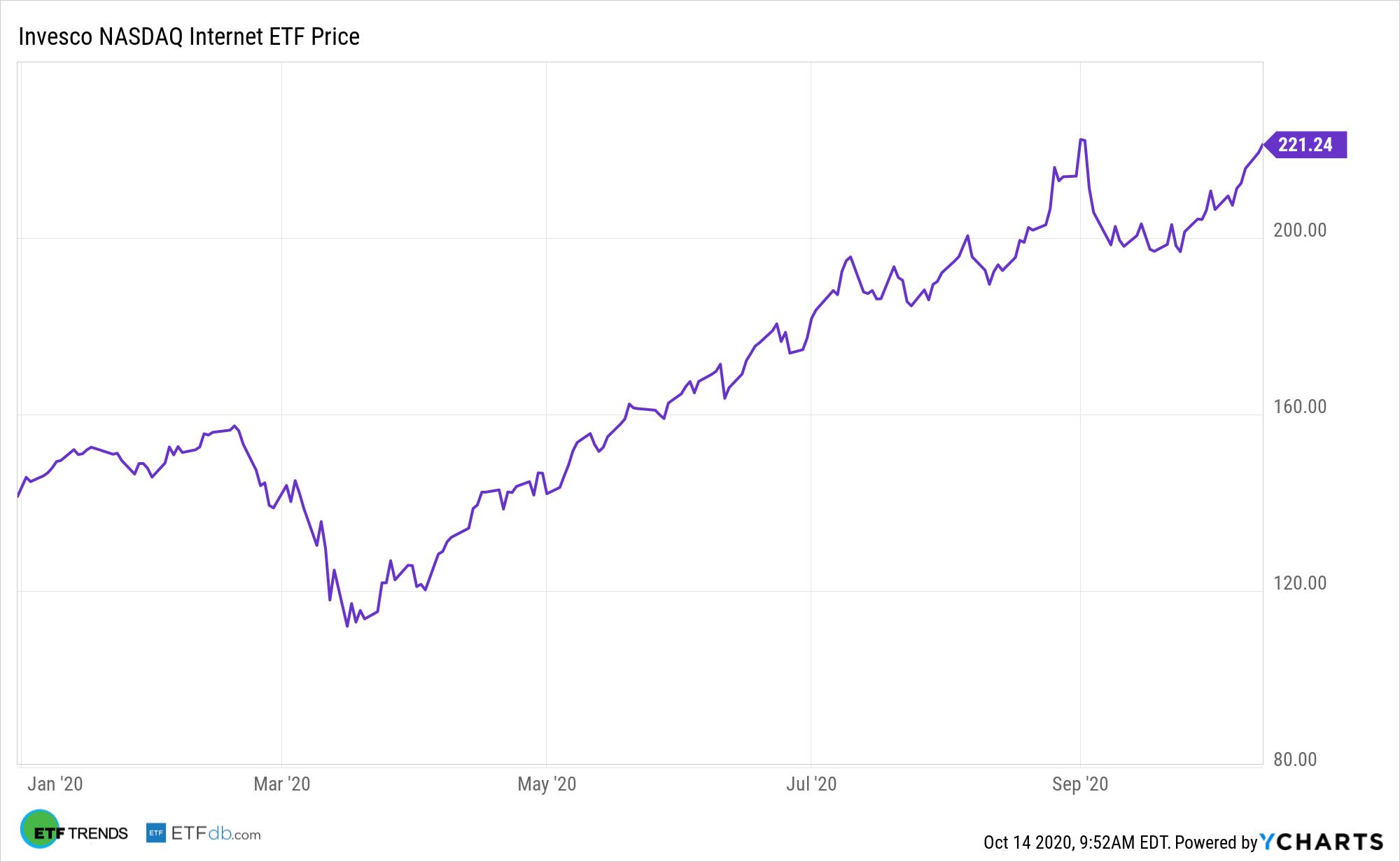Investors looking for assets positioned for success regardless of what happens on Election Day may want to examine internet stocks and exchange traded funds, such as the Invesco NASDAQ Internet ETF (PNQI).
PNQI seeks to track the investment results (before fees and expenses) of the NASDAQ Internet Index. The fund generally will invest at least 90% of its total assets in securities that comprise the underlying index. The underlying index is designed to track the performance of the largest and most liquid U.S.-listed companies engaged in Internet-related businesses that are listed on one of the three major U.S. stock exchanges.
Trends that PNQI is levered to, namely the rise of e-commerce and increased devotion to social media platforms, aren’t politically sensitive, indicating the Invesco fund can build on its already impressive 2020 showing after the polls close.

“In Q2, e-commerce sales increased by 44% year over year, nearly four times faster than the average growth over the past three years. The pandemic has accelerated the shift to online shopping by roughly five years, as e-commerce now represents 16% of total retail sales, compared with 11% last year,” according to State Street research.
The Power of PNQI’s Roster
A meaningful difference between PNQI and rival funds is that the Invesco ETF doesn’t limit its roster to just consumer discretionary and communication services stocks. The tech sector accounts for over 28% of the fund’s weight and PNQI’s exposures from that sector put the fund at the corner of exciting themes, including cloud computing and work from home. Again, these are themes that are highly correlated to political outcomes.
Internet usage also surged in the post-coronavirus pandemic environment, as many consumers were stuck at home. According to McKinsey & Co., many online and at-home solutions to regular activities will likely be adopted for the long-term due to the change brought on by Covid-19. For example, many shopping categories saw 10% or more growth in their online customer base during the pandemic, and consumers continue to shop online even when brick and mortar stores have opened,
“Meanwhile, people are spending more time on social media, boosting engagement on these platforms. According to a survey of US social media users in March, 29.7% of respondents spent one to two additional hours per day on social media. Another 20.5% spent 30 minutes to one hour more,” according to Stat Street. “Advertising budgets and cost-per-click for paid ads are returning to pre-pandemic levels, with a shift from traditional to digital media.”
PNQI is higher 55% year-to-date.
For more on innovative portfolio ideas, visit our Nasdaq Portfolio Solutions Channel.
The opinions and forecasts expressed herein are solely those of Tom Lydon, and may not actually come to pass. Information on this site should not be used or construed as an offer to sell, a solicitation of an offer to buy, or a recommendation for any product.

